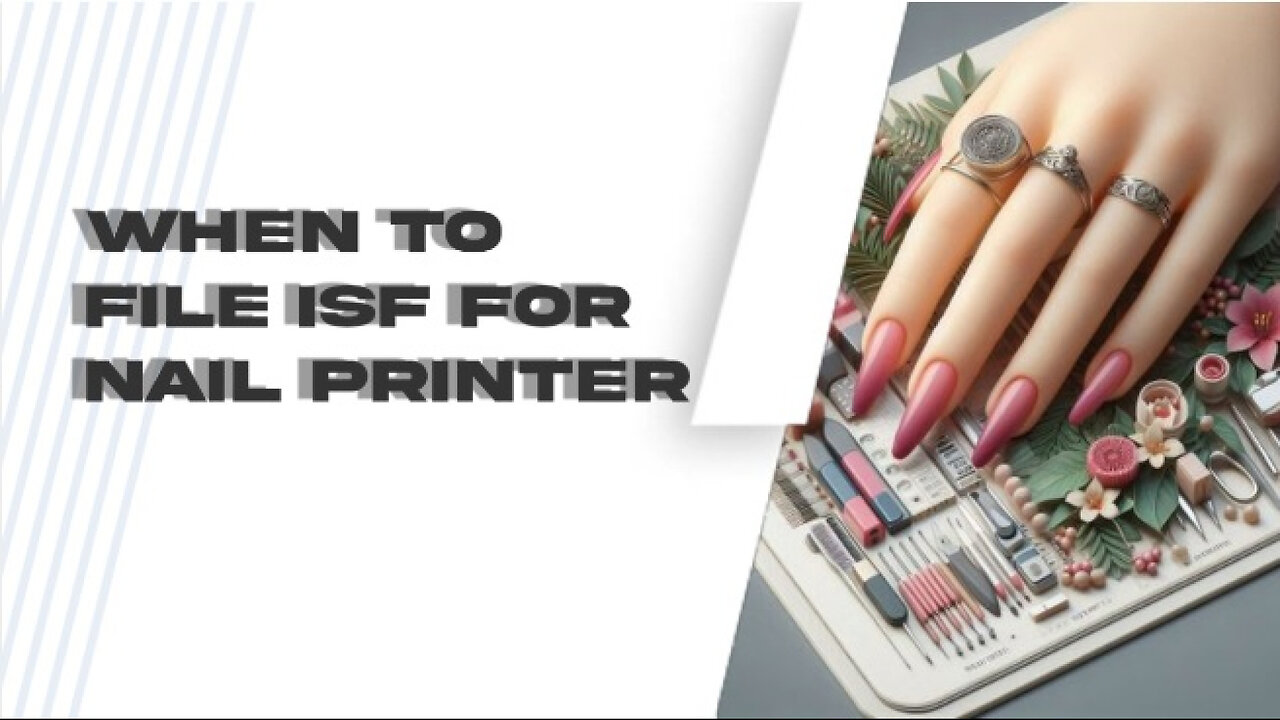Premium Only Content

The Ins and Outs of Filing an Importer Security Filing for Nail Printers
ISF Checklist || 805-970-7918 || [email protected] || www.isfchecklist.com
In this episode of our Customs Brokerage 101 series, we discuss when to file an Importer Security Filing (ISF) for a nail printer. The ISF, also known as the 10+2 rule, is a requirement by the US Customs and Border Protection (CBP) that mandates the submission of certain information about goods entering the United States to enhance supply chain security and streamline customs processes. For nail printers and other commercial goods, the ISF must be filed at least 24 hours prior to the cargo being loaded onto a vessel destined for the United States, regardless of the mode of transportation. Customs brokers play a crucial role in helping importers comply with the ISF requirements by gathering and submitting the necessary information and providing updates on cargo status. Additionally, customs brokers can assist importers in obtaining a customs bond, which is a financial guarantee that ensures the payment of duties, taxes, and other fees required by CBP. It's important to include accurate and complete information in the ISF to avoid penalties or delays in customs clearance. Having a reliable customs broker is essential to ensuring a smooth and compliant import process.
#usimportbond #isfcustomsbroker #uscustomsclearing #isfentry
Video Disclaimer Here: This video is purely educational and has no ties with the US government.
00:22 - ISF Filing Requirements: An Importer Security Filing (ISF) must be submitted at least 24 hours before a nail printer is loaded onto a vessel heading to the U.S., ensuring compliance with customs regulations.
01:14 - Transportation Mode Compliance: Regardless of whether the nail printer is shipped by sea or air, the ISF must be filed prior to departure to avoid penalties and shipment delays.
02:22 - Essential Information for ISF: Key details required in the ISF include manufacturer and seller information, buyer or importer identification, consignee details, and container stuffing location, all of which must be accurate to prevent customs issues.
-
 23:47
23:47
James Klüg
1 day agoAnti-Trumpers SNAP When I Arrive
17.2K26 -
 LIVE
LIVE
FyrBorne
3 hours ago🔴Battlefield REDSEC Live M&K Gameplay: Turkey'ing Day
100 watching -
 31:27
31:27
MetatronCore
1 day agoAsmongold Annihilated Kyle Kulinski
37.2K14 -
 LIVE
LIVE
ytcBUBBLESBOOM
3 hours ago😥Can I just get this Battle Pass Done Now!! Live with Bubbles on Rumble 💚😋
99 watching -
 LIVE
LIVE
Midnight In The Mountains™
2 hours agoMorning Coffee w/ Midnight & The Early Birds of Rumble | Happy ThanksGiving Stream | Long Live Rum!
218 watching -
 1:02:57
1:02:57
ZeeeMedia
21 hours agoVaccines, Transhumanism & the Hidden Agenda ft. Dr. Suzanne Humphries | Daily Pulse Ep 152
26.1K49 -
 15:42
15:42
Nikko Ortiz
17 hours agoPublic Freakouts Caught On Camera...
88.2K27 -
 9:55
9:55
MattMorseTV
21 hours ago $23.58 earnedTheir ENTIRE PLOT just got EXPOSED.
31.7K95 -
 1:55
1:55
Dr Disrespect
2 days agoPeak Focus. No Crash. This Is KENETIK
29.7K9 -
 2:06:36
2:06:36
Side Scrollers Podcast
22 hours agoThis is the Dumbest Story We’ve Ever Covered… | Side Scrollers
82.1K22